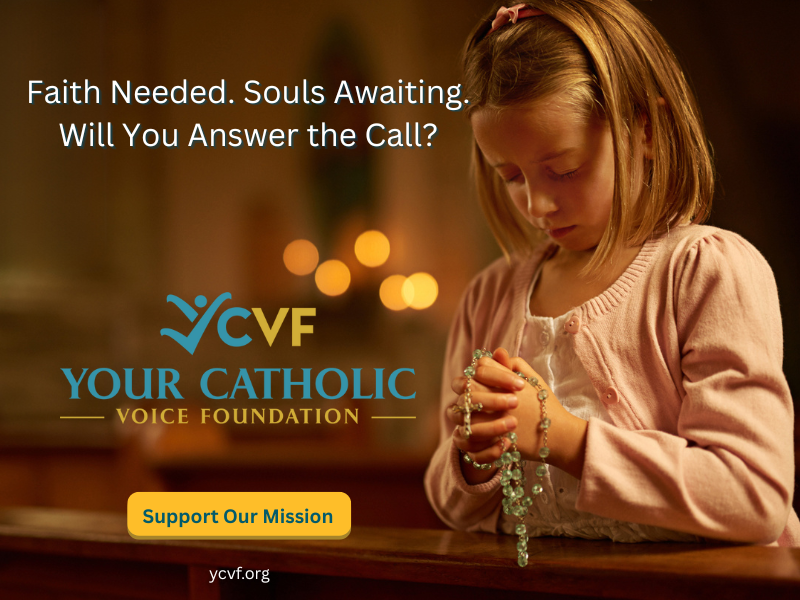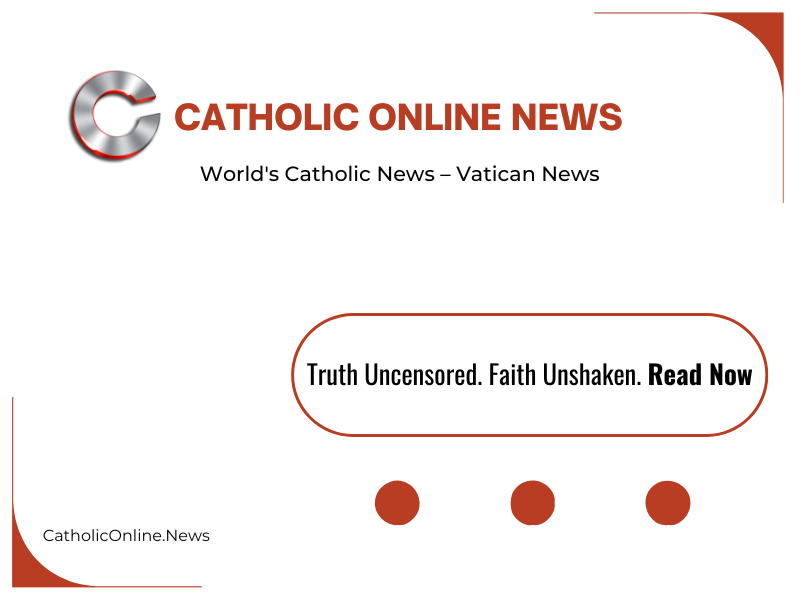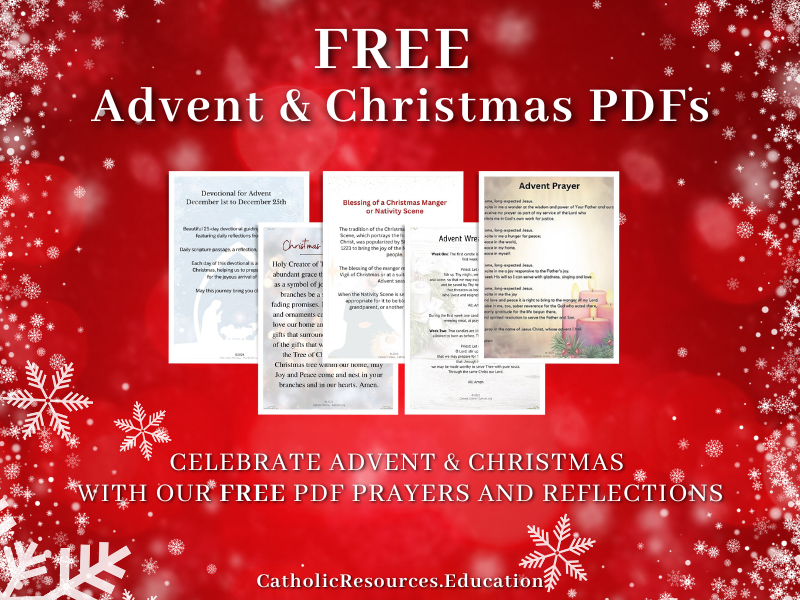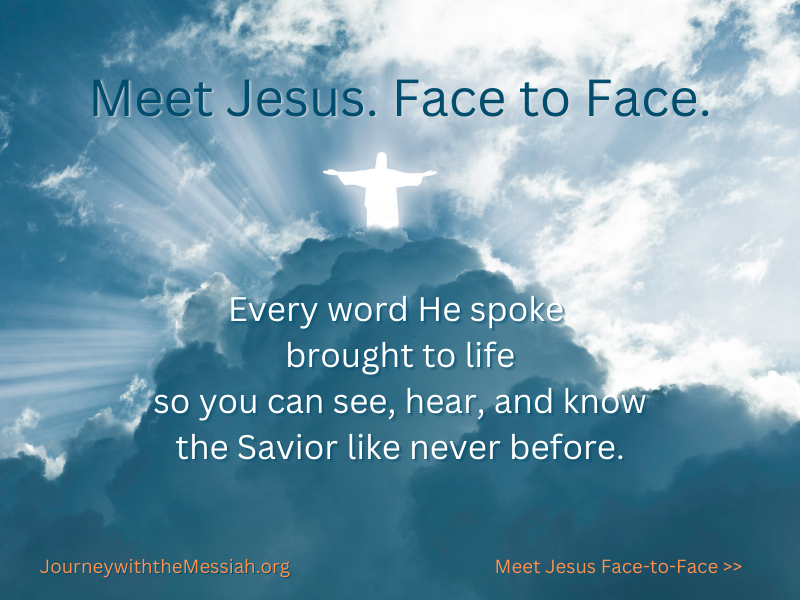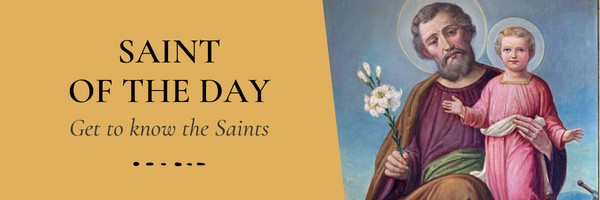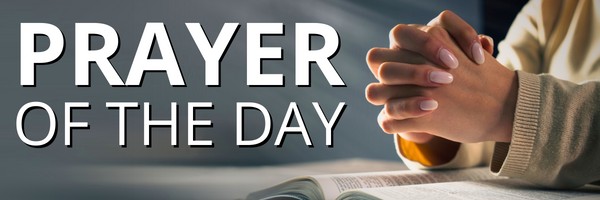 Dear readers, Catholic Online was de-platformed by Shopify for our pro-life beliefs. They shut down our Catholic Online, Catholic Online School, Prayer Candles, and Catholic Online Learning Resources essential faith tools serving over 1.4 million students and millions of families worldwide. Our founders, now in their 70's, just gave their entire life savings to protect this mission. But fewer than 2% of readers donate. If everyone gave just $5, the cost of a coffee, we could rebuild stronger and keep Catholic education free for all. Stand with us in faith. Thank you. Help Now >
Dear readers, Catholic Online was de-platformed by Shopify for our pro-life beliefs. They shut down our Catholic Online, Catholic Online School, Prayer Candles, and Catholic Online Learning Resources essential faith tools serving over 1.4 million students and millions of families worldwide. Our founders, now in their 70's, just gave their entire life savings to protect this mission. But fewer than 2% of readers donate. If everyone gave just $5, the cost of a coffee, we could rebuild stronger and keep Catholic education free for all. Stand with us in faith. Thank you. Help Now >
Knownothingism
FREE Catholic Classes
This was a name applied to a movement in American politics which attracted a large share of public attention during the period from 1851 to 1858. It was the revival or re-appearance under a new name of the Native American movement which, during the preceding quarter of a century, had made various organized efforts to engraft its principles upon the legislation and policy of the American government. These principles briefly stated, were
- the proscription of those who professed the Roman Catholic faith and,
- the exclusion of foreign-born citizens from all offices of trust and emolument in the government, whether federal, state, or municipal.
With the organization of government and the adoption of a written Constitution, the question of religious toleration naturally arose, and the principle of freedom of religion was incorporated in the Federal Constitution (Art. VI) which declared that "no religious test shall ever be required as a qualification to any office or public trust under the United States ". This liberty of conscience was further assured by an amendment adopted in 1791, which declared that "Congress shall make no law respecting an establishment of religion or prohibiting the free exercise thereof." While the policy of the National Government was thus defined, and its law-making power was restrained from legislation hostile to the principle of freedom of religion, the individual states had reserved the right to regulate the question of religion and of a state Church within their respective jurisdictions, and the elimination from the Constitutions of the various states of the religious disqualifications which they contained affecting Roman Catholics was accomplished slowly and not without much resistance on the part of a considerable portion of the population. Thus, it was not until 1833 that the union between Church and State in the Commonwealth of Massachusetts was dissolved, and Catholics were relieved from having to pay taxes for the support of the state ( Protestant ) Church. New Jersey retained its anti-Catholic Constitution until 1844, and only in 1877 did New Hampshire expunge from its Constitution the provision disqualifying Catholics from holding office in that state. These, with instances from other states which might be added, show that the spirit of intolerance of the Roman Catholic religion still survived. Freedom of religion as asserted in the Federal Constitution was not by any means universally accepted in theory, still less in practice.
The Tory element in the population, composed almost wholly of adherents of the Church of England, was most prominent in its resistance to that principle. Many of these were secretly opposed to the total independence of the colonies. In New York, where they were most numerous, they had been the governing class; theirs was the state Church ; their wealth and social standing gave them a large share in the direction of public affairs which they rightly judged would be lost to them by the establishment of the republic on the principles of freedom and equality declared by Thomas Jefferson, and, when their mother country was compelled to acknowledge the independence of the colonies, over 30,000 of these Tories voluntarily deported themselves, most of them to England and Canada. Those who remained became identified with the political party known as the Federalists. Successful for a time in retaining the control of the newly-organized government, the leaders of that party "strove to preserve the political ascendency of Protestantism in the states both by Federal legislation affecting the naturalization of emigrants and by preventing legislation in their respective states for the relief of Catholics from their religious disabilities which was necessary to give effect to the liberal spirit and purpose of the Constitution" (see "U.S. Catholic Historical Records and Studies", Vol. III, p. 95).
Thus, John Jay, of New York, who afterwards became Chief Justice of the United States, succeeded in fastening upon the Constitution of his own state a provision which denied the privilege of citizenship to every foreign-born Catholic unless he would first abjure and renounce all allegiance to the pope in matters ecclesiastical. This provision remained in force until 1821, when the power and influence of the Federal party had well nigh disappeared. During the administration of the Federalist president, John Adams, 1798-1802, that same party forced the passage of the Alien Act, under which the president might expel from the county all aliens whom he might regard as disaffected towards the Government, as well as that other Act requiring a residence of fourteen years in the country before any foreign-born person could be admitted to citizenship. In brief, the Federalists were the Native Americans of their day, and Knownothingism, as the latest and, because of its excesses, the most odious manifestation of the Native American spirit, may be said to have had its genesis in the prejudices nursed by the Federalists against foreign-born citizens and in their intolerance of their fellow-citizens professing the Roman Catholicfaith. These offensive, not to say unlawful, sentiments found numerous advocates, not only among political demagogues and aspirants for public office, but also in the pulpit and in the religious press of those days. The tide of immigration which had set in was largely Irish and soon became distinctively Catholic in character. One of the inducements to this immigration was the hope it held out of release from the civil disabilities and the religious proscription under which the immigrants had laboured in their native land. When, therefore, a powerful party was founded exerting itself to exclude these immigrants from the privilege of citizenship because of their race and creed, it was most natural that they and their co-religionists of whatever race should, as they did, ally themselves with the opposing political party which supported those principles of political equality and freedom of religion which had been proclaimed as distinctive principles of the American scheme of government. The growing immigration and the increase in the number of naturalized citizens strengthened the party with which these immigrants had become identified, and the extension of their political influence, as shown at the elections, was used by the advocates of proscription as a justification of their policy. Throughout the various Native American and Knownothing movements which America has witnessed, political hostility and religious prejudice, the one supplementing the other, appear as the motive and inspiration. Knownothingism was only the development and application of the principles of Native Americanism whose character and origin we have briefly sketched.
During the half-century preceding the Knownothing era, the questions involved in that movement had been frequently agitated. Catholics and foreigners were denounced, mainly from Protestant pulpits, as enemies of the Republic. Books and newspapers calculated to inflame the passions of the mob against their Irish and Catholic neighbours were extensively circulated. Catholic bishops and priests were maligned, their religion misrepresented and ridiculed, and acts of violence were committed against Catholics and their property. The burning of the Convent of the Ursuline nuns at Charleston, Massachusetts, in 1834, by a Native American mod, and their cruel treatment of the unoffending nuns and their pupils, were the most notable manifestations, up to that time, of the evil effect of religious hatred. In 1835 the first formal organization of the partisans of the Native American movement under that name, was effected at New York City. Various newspapers, such as "The Protestant", "The Protestant Vindicator", "The Downfall of Babylon", and the like, were established in New York and New England as aids to the movement. The "evils of Popery" and the danger to arise to the Republic from tolerating the practice of the Catholic religion were staple topics of discussion by no inconsiderable number of ministers of religion, and under the impulse of these incitements the spirit of religious prejudice was kept alive; there were new aggressions upon the rights of Catholic citizens, the peace and order of the community were occasionally disturbed by acts of violence, and another decade in the history of Native Americanism terminated in the bloody riots which occurred at Philadelphia, in 1844, when several Catholic churches were attacked by the Native American mob, and two of them, St. Michael's and St. Augustine's, were deliberately fired and reduced to ashes, and the safety of those that remained were so endangered by the hostile demonstrations of the mob that public worship was suspended by order of Bishop Kenrick, and on Sunday, 12 May, 1844, all Catholic churches in that city were closed. Many houses tenanted by Irish Catholics were likewise wantonly destroyed by fire, some of the inmates were shot down at their doorsteps, and a number of other unoffending citizens lost their lives.
The party whose members were soon to be described as "Knownothings" was formally organized in 1852 in the City of New York. Although begun as a local society, it was designed to become a national organization. Its leaders had planned to concentrate in a single party the membership of various Native American orders already in existence and the "American Republicans", the "Order of United Americans", "Sons of America", and "United American Mechanics of the United States " formed the nucleus of the new party. It adopted the title of "National Council of the United States of North America." Among the initiate it was called the "Supreme Order of the Star-spangled Banner" and was sometimes familiarly spoken of as "Sam". Its published ritual declared (Article II) the purpose of the organization to be "to protect every American citizen in the legal and proper exercise of all his civil and religious rights and privileges ; to resist the insidious policy of the Church of Rome and all other foreign influence against our republican institutions in all lawful ways; to place in all offices of honour, trust or profit in the gift of the people or by appointment none but Native American Protestant citizens" (see American Politics, Book I, pp. 57-9). Article III declared "that a member must be a native-born citizen, a Protestant either born of Protestant parents or reared under Protestant influence, and not united in marriage with a Roman Catholic. . .no member who has a Roman Catholic wife shall be eligible to office in this order", etc. There were several degrees of membership as there were also state, district, and territorial councils, all of them subordinate to the National Council. The organization had the usual equipment of secret signs, grips, passwords, and the like. Upon his admission the member was required to take the following oath :--
"In the presence of Almighty God and these witnesses, you do solemnly promise and swear that you will never betray any of the secrets of this society, nor communicate them even to proper candidates, except within a lawful council of the order; that you never will permit any of the secrets of this society to be written, or in any other manner made legible, except for the purpose of official instruction; that you will not vote, nor give your influence for any man for any office in the gift of the people, unless he be an American-born citizen, in favor of Americans ruling America, nor if he be a Roman Catholic ; that you will in all political matters, so far as this order is concerned, comply with the will of the majority, though it may conflict with your personal preference, so long as it does not conflict with the Constitution of the United States of America or that of the State in which you reside; that you will not, under any circumstances whatever, knowingly recommend an unworthy person for initiation, nor suffer it to be done, if in your power to prevent it; that you will not, under any circumstances, expose the name of any member of this order nor reveal the existence of such an association; that you will answer an imperative notice issued by the proper authority; obey the command of the State council, president or his deputy, while assembled by such notice, and respond to the claim of a sign or cry of the order, unless it be physically impossible; . . ."Although the existence of the new party was generally known, and its political activities soon became manifest, all inquiries by outsiders respecting its organization and purpose, and especially as to the names of members, were met by those identified with the movement with the answer: "I don't know ". This was in conformity with that part of the oath which forbade the member "To expose the name of any member of their order nor reveal the existence of such an association", and from this answer so uniformly repeated the nickname "Knownothing" was invented and was applied to the party and its members, and thus the Native Americanism of that period has passed into history under the name of Knownothingism. Within three years state councils of the order were established in thirty-five states and territories, and its advocates claimed that it controlled one and a half million legal voters, or nearly one-half of the entire popular vote cast at the presidential election in 1852. For a time it confined its political activities to supporting candidates approved at the secret meetings of the councils who had been nominated by one or other of the older political parties, and the leaders of those parties were frequently surprised at the unexpected strength thus developed by the secretly favoured candidates; but by 1854 it directly nominated the candidates to be voted for. The party had been successful in the municipal elections in Philadelphia, Baltimore, San Francisco , New Orleans, and for a time in New York City. In 1854 the Knownothings sent forty representatives to Congress, and elected their candidate, Gardiner, Governor of Massachusetts, with a legislature of the same type. In New York, in the same year, the party polled 122,000 votes and in the next year was successful in that state, polling 146,000 votes. In 1855 New Hampshire, Connecticut, and Rhode Island each elected a Knownothing governor, and the party carried the elections in nine different states.
In the Thirty-fifth Congress, which assembled in December, 1855, there were seventy-five Knownothing members elected as such. In 1856 Horace Greeley wrote: "The majority of the Banks men"--Banks being the candidate for Speaker of the House of Representatives--"are now members of Knownothing councils and some twenty or thirty of them actually believe in that swindle. Half of the Massachusetts delegation, two-thirds of that of Ohio and nearly all of that of Pennsylvania are Knownothings". In 1855 the Knownothing party suffered a serious reverse in Virginia, when Henry A. Wise, the Democratic candidate, was elected governor of that state, chiefly on the issue of his antagonism to Native American principles and policies. In 1856, at Philadelphia, the delegates of the Knownothing party held a convention at which they nominated Millard Fillmore as candidate for President. Opposed to them in that election were the Democratic party and the newly organized Republican party, both of whom had expressed their dissent from Native American principles. Speaking of this selection, Schouler says: "Their candidate Fillmore met with the most ignoble defeat, receiving only the eight electoral votes of Maryland, his adversary, James Buchanan, the nominee of the National Democratic party being triumphantly elected. For the Native Americans with their proscriptive tenets, the defeat was overwhelming. It was apparent that the American or Knownothing party had now nearly evaporated" (History of the U.S., IV, p. 357).
The American people had weighed the claims of the Knownothing party to be regarded as the saviours of the republic and had witnessed the criminal excesses to which that party had resorted in its efforts to secure political control, and the sober sense of the great mass of the people had repudiated both. Moreover the great controversy over slavery coupled with the claim of the right of a state to secede from the Union was pressing upon the attention of the nation to the exclusion of nearly every other question, so that upon the election of President Lincoln (1860) Knownothingism as an organized party had ceased to exist, and only its disagreeable memory remained.
The history of Knownothingism would be very imperfectly told without some account of the wrongs inflicted upon Catholics and the criminal excesses committed by the partisans of that movement. The same bitter attacks against the Catholics and the same incitements to violence could not fail to produce results similar to those which had characterized the earlier Native American movements. In 1851 the large Knownothing element in Providence, R. I., was excited over the establishment there of a community of Sisters of Mercy under the direction of Mother Xavier Warde. The cottage occupied by the sisters was attacked at night, and all the windows broken. In daytime, as the sisters passed through the streets, they were hooted at and otherwise insulted, and were openly threatened with the destruction of their convent. So persistent were these threats that the Mayor requested the sisters to abandon their residence in xxyyyk.htm">Providence so as to avert the threatened disorder. Soon afterwards a mob of Knownothing partisans fully armed was assembled whose purpose of attacking the convent had been openly announced. The bishop's house and one or more of the churches were likewise marked for destruction. After fruitless appeals to the civil authorities for protection, the Irish Catholics of xxyyyk.htm">Providence, under the prudent and resolute lead of Bishop O'Reilly, prepared to resist the mob and to repel any violence that might be attempted. The mob marched to the convent, but, finding it guarded by a number of Catholic Irishmen, with Bishop O'Reilly present and declaring that the sisters and their convent should be protected at whatever cost, the Knownothing leaders decided not to molest the convent, and the mob dispersed.
In 1853, on the occasion of the visit to America of Archbishop Bedini, Apostolic Nuncio to the Court of Brazil, a great outcry was raised by the Knownothing element throughout the country, with whom were joined certain Italian refugees who had emigrated to escape the consequences of their criminal conduct at home. In all the cities visited by the archbishop hostile demonstrations were made against him. At Boston, Baltimore, Wheeling, St. Louis, and Cincinnati where the Nuncio took part in various solemn religious celebrations, there were scenes of disorder, and in some cases of bloodshed, provoked by the Knownothing speakers both lay and clerical, as well as by the anti-Catholic press. At Cincinnati, in December, 1853, a mob of 600 men armed with weapons of various sorts, and carrying lighted torches and ropes, marched to the cathedral intending to set it on fire and, as was believed, to hang the Nuncio. There was an encounter with the police, and the mob was dispersed, but not until after shots had been fired and several persons wounded. During 1854 there were numerous assaults upon Catholic churches throughout the country by the Knownothing element. St. Mary's church at Newark, N. J., was invaded by a mob made up of Knownothings and Orangemen from New York City; the windows were broken, some of the statuary destroyed, and one unoffending bystander, an Irish Catholic, was shot and killed. In October of the same year, at Ellsworth, Maine, Father John Bapst, S.J. , was dragged from the church, robbed of his watch and money, tarred and feathered, and ridden about the village on a rail.
On 4 July, at Manchester, N. H., St. Anne's church was attacked, its windows broken and furniture destroyed, the priest compelled to seek shelter away from his home, and the houses of Irish Catholics were likewise attacked, the inmates driven out, even the sick being dragged from their beds. At Bath, Me., the mob broke into the church and, after wrecking the altar and the pulpit, set fire to the building which was reduced to a heap of ashes. At Dorchester, Massachusetts, a keg of gunpowder was placed under the floor of the little Catholic church, it was fired at three o'clock in the morning and resulted in almost the total destruction of the building. Another Catholic church, at Sidney, Ohio, was blown up with gunpowder. At Massillon, Ohio, another church was burned, and an attempt made to burn the Ursuline Convent at Galveston, Texas. At Lawrence and at Chelsea, Massachusetts, the Catholic churches were attacked by the Knownothing mob, the windows smashed, and much other damage done. St. Mary's church at Norwalk, Conn., was set on fire and later its cross was sawed off the spire. A fire was started in the church of Sts. Peter and Paul in Brooklyn, and the building was saved only by the interference of the police aided by the militia, who drove off the mob. St. Mary's Church at Saugerties, N. Y., was set on fire and nearly destroyed by the fanatics, and an attempt made to burn the church at Palmyra, N. Y. The following year (1855), at Louisville, Ky., the elections were attended with such rioting and bloodshed, the result of Knownothing agitation, that the day (5 Aug.) acquired the name of "Bloody Monday". The cathedral was invaded by the mob and was saved from destruction only by the prudence of Bishop Spalding, who, in a letter to Bishop Kenrick summing up the results of the day's proceedings, said: "We have just passed through a reign of terror surpassed only by the Philadelphia riots. Nearly one hundred poor Irish have been butchered or burned and some twenty houses have been consumed in the flames. The City authorities, all Knownothings, looked calmly on and they are now endeavouring to lay the blame on the Catholics " (see "Life of Archbishop Spalding ", by J.L. Spalding, p. 185).
While their ignorant followers were engaged in these lawless proceedings the leaders were exerting themselves in various directions to secure legislation hostile to Catholics, especially to Irish immigrants, then mostly of that faith. In the legislatures of some of the states bills were proposed to authorize the visitation and inspection of convents and other religious institutions by state officials, and in Massachusetts, in 1854, such a law, known as the Nunneries Inspection Bill, was actually passed. Under this a legislative committee made a tour of inspection and in a very offensive manner visited several Catholic colleges and convents. In several states, notably in New York, church property bills were proposed which were designed to destroy the title to Catholic church property , which for the most part stood in the name of the bishop, there being then no law for the incorporation of Catholic churches by which such title might be securely held. In Congress efforts were made to restrict the benefits of the Homestead Laws to those who were actual citizens of the United States , and the old-time proposal to extend the period of residence to twenty-one years before a person could be admitted to citizenship was constantly agitated. Of lesser importance were the laws and ordinances passed in Massachusetts disbanding various volunteer militia companies bearing the name of some Irish patriot and composed for the most part of Catholic Irishmen.
These different measures were advocated in the newspaper organs, both secular and religious, of the Knownothing party. The New York Church Property Bill evoked the newspaper controversy between Archbishop Hughes and Senator Brooks which attracted attention all over the country. In addition, many books and pamphlets were put in circulation in support of the Knownothing claims. Much of this literature was grossly insulting to Catholics and especially to the Irish members of that Church, and the Catholic press of those days was busily engaged in meeting the charges made against the Church. Speaking of Knownothingism, the authors (Nicolay and Hay ) of the "Life of Lincoln" (Vol. II, p. 357) say: "Essentially it was a revival of the extinct Native American faction based upon a jealousy of and discrimination against foreign born voters, desiring an extension of their period of naturalization and their exclusion from office; also based upon a certain hostility to the Roman Catholic religion."
Schouler, another non-Catholic historian, says (History of the United States, Vol. V, p. 305): "They [the Knownothings] revived the bitter spirit of intolerance against the Roman Catholic Church such as ten years before had been shown in the riots of Charlestown and Philadelphia, by representing it as foreign, the handmaid of popular ignorance and bent on chaining Americans to the throne of the Vatican. . . . Catholic churches were assaulted every now and then by some crowd of Bible bigots helped on by the brawny friends of free fight inflamed by street preachers and the revelations of ' converted Jesuits' and 'escaped nuns' etc." Speaking of the partisans of the movement, Bishop J. L. Spalding said (Life of Archbishop Spalding, p. 174) they were "the depraved portion of our native population". He added: "It was not the American people who were seeking to make war on the Church, but merely a party of religious fanatics and unprincipled demagogues who as little represented the American people as did the mobs whom they incited to bloodshed and incendiarism. Their whole conduct was un-American and opposed to all the principles and traditions of our free institutions".
Brownson spoke of their prejudices as "contemptible"; "The Native-American Party", said he (Essays and Reviews, p. 428), "is not a party against admitting foreigners to the rights of citizenship, but simply against admitting a certain class of foreigners. It does not oppose Protestant Germans, Protestant Englishmen, Protestant Scotchmen, not even Protestant Irishmen. It is really opposed only to Catholic foreigners. The party is truly an anti-Catholic party, and is opposed chiefly to the Irish, because a majority of the emigrants to this country are probably from Ireland, and the greater part of these are Catholics."
Join the Movement
When you sign up below, you don't just join an email list - you're joining an entire movement for Free world class Catholic education.
An Urgent Message from Sister Sara – Please Watch
- Advent / Christmas
- 7 Morning Prayers
- Mysteries of the Rosary
- Litany of the Bl. Virgin Mary
- Popular Saints
- Popular Prayers
- Female Saints
- Saint Feast Days by Month
- Stations of the Cross
- St. Francis of Assisi
- St. Michael the Archangel
- The Apostles' Creed
- Unfailing Prayer to St. Anthony
- Pray the Rosary
![]()
Copyright 2025 Catholic Online. All materials contained on this site, whether written, audible or visual are the exclusive property of Catholic Online and are protected under U.S. and International copyright laws, © Copyright 2025 Catholic Online. Any unauthorized use, without prior written consent of Catholic Online is strictly forbidden and prohibited.
Catholic Online is a Project of Your Catholic Voice Foundation, a Not-for-Profit Corporation. Your Catholic Voice Foundation has been granted a recognition of tax exemption under Section 501(c)(3) of the Internal Revenue Code. Federal Tax Identification Number: 81-0596847. Your gift is tax-deductible as allowed by law.
